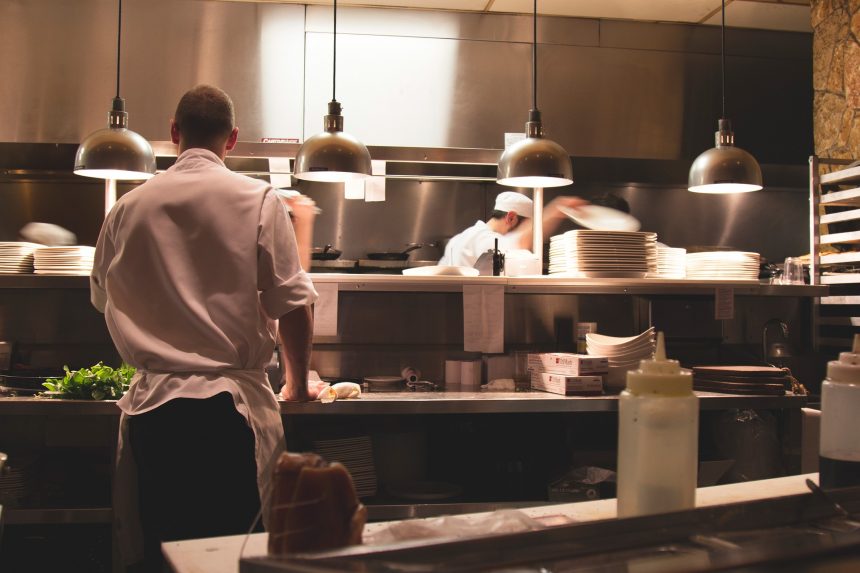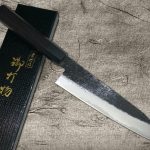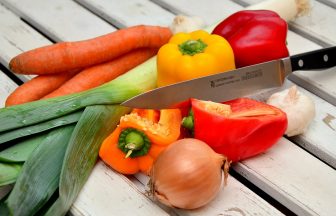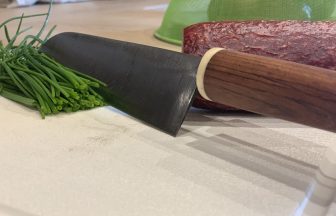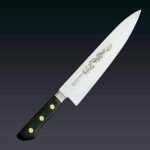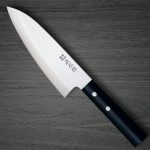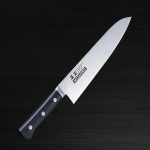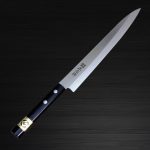Any tool used while cooking to cut or slice vegetables, fruit and meat is called a kitchen knife. Kitchen knives use depends on the situation. These knives are made of various materials, including carbon steel, high-carbon steel, stainless steel, lamination, ceramic and plastic. Kitchen knives use is always a question of sharpness and material.
Kitchen knives sets
Kitchen knives sets come with different knives, including a chef’s knife, bread knife, offset serrated knife, paring knife, utility knife, steak knife, slicing knife, cleaver knife, boning knife, ham slicer, peeling knife, decorating knife, soft cheese knife, hard cheese knife, tomato knife, oyster knife, shears, carving fork and a cutting board. These knives are often stored in a wooden box with their accessories. Kitchen knives use is not restricted to the kitchen only during cooking, however; these knives can fulfill a variety of roles.
Chef’s knives are the most common knives in kitchens.
These knives have curved blades and can rock back and forth on the cutting board, allowing for a better cut. Chef’s knives are all-purpose knives and are used for doing tasks such as chopping, slicing, dicing and mincing. Most chef’s knives are large for better results. Kitchen knives use is recommended only for skilled people; these knives are sharp and dangerous, and can be harmful in the hands of inexperienced people. A chef can use a knife for any number of chores during the preparation of a meal.
Kitchen knives use is often described in the name of the knives.
For example, bread knives are used for cutting bread. They are serrated knives and are usually around eight inches in length. Offset serrated kitchen knives use is similar to the use of bread knives; these knives are often grouped with bread knives since the differences are minimal. These knives are easy to handle and are popular with chefs, although the typical home kitchen may not house one.
Paring knives are small knives and are useful for peeling and other small jobs. These knives have plain-edge blades and are designed as all-purpose knives, similar to chef’s knives; however, paring kitchen knives use is restricted to small tasks. Utility knives are medium in size and are designed for cutting. These knives may have a plain-edge blade or a serrated blade. Utility knives have gained a lot of popularity in recent years.
Tomato knives are small knives ideal for cutting through the soft flesh of tomatoes and the tougher skin of other fruit and vegetables. Oyster knives are short, thick-bladed knives ideal for separating the meat of oysters from their shells. And as the name suggests, cheese knives are ideal for slicing cheese. These are the common knives found in the average kitchen; of course, kitchen knives use is dependent on the cook, and the professional cook will have a much larger arsenal than a homemaker. More often than not, these knives are purchased in cutlery sets, complete with a wet stone knife sharpening kit.
Summary
The Japanese have a unique style of crafting knives. Japanese kitchen knives are sharper and are made of carbon steel, giving them an extra shine. For European kitchen knives, Sabatier knives, from France, are some of the best. But the Japanese and French, like other groups of cooks or chefs, must choose their knives wisely and compared kitchen knives before purchasing; kitchen knives use is dictated solely by the task at hand.

